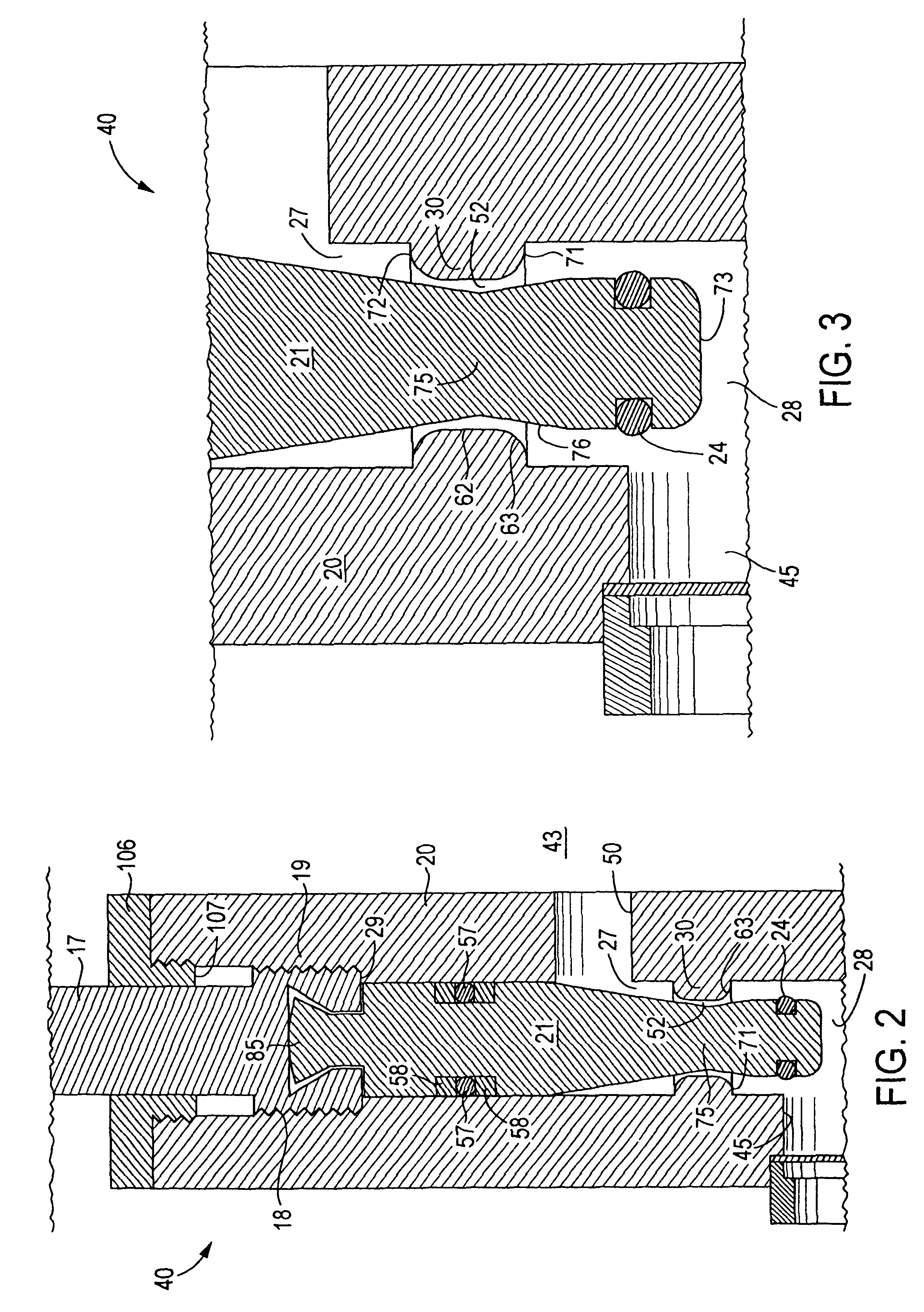Cylinder valve and bayonet check-filter with excess-flow protection feature
a technology of excess flow protection and cylinder valve, which is applied in the direction of fluid pressure control, lift valve, vessel geometry/arrangement/size, etc., can solve the problems of cylinder valve firing downstream, seat subject to strong frictional interference, and undesirable features for prudent persons awar
- Summary
- Abstract
- Description
- Claims
- Application Information
AI Technical Summary
Benefits of technology
Problems solved by technology
Method used
Image
Examples
Embodiment Construction
)
The inventive valve ameliorates vulnerability to the common ignition mechanisms that are observed in oxygen systems. The invention incorporates the recommended design criteria that have been established in standards such as ASTM G88, "Design Guide for Oxygen Systems," ASTM G128, "Control of Hazards and Risks in Oxygen Enriched Systems," ASTM G63, "Evaluating Nonmetallic Materials for Oxygen Service," and ASTM G94, "Evaluating Metals for Oxygen Service." The ignition mechanisms that are specifically eliminated by the design features of this valve are adiabatic compression, flow friction / flow erosion, particle impact, mechanical impact, frictional heating, and kindling chain / promoted ignition. Before disclosing specifics of the invention, its design advantages are discussed generally.
The design of the apparatus ensures that the main seat is protected from the discharge flow and is not subject to "flow impingement." This reduces seat ignition mechanisms such as flow friction and flow ...
PUM
 Login to View More
Login to View More Abstract
Description
Claims
Application Information
 Login to View More
Login to View More - R&D
- Intellectual Property
- Life Sciences
- Materials
- Tech Scout
- Unparalleled Data Quality
- Higher Quality Content
- 60% Fewer Hallucinations
Browse by: Latest US Patents, China's latest patents, Technical Efficacy Thesaurus, Application Domain, Technology Topic, Popular Technical Reports.
© 2025 PatSnap. All rights reserved.Legal|Privacy policy|Modern Slavery Act Transparency Statement|Sitemap|About US| Contact US: help@patsnap.com



